
Houseplants bring warmth and life into any space, and with the right care, they’ll thrive for years. In this guide, we’ll explore 20 of the most popular houseplants, share detailed care tips for each, and reveal the perfect watering schedule.
Let’s dive in and get your indoor jungle off to a great start!
1. Snake Plant (Sansevieria)
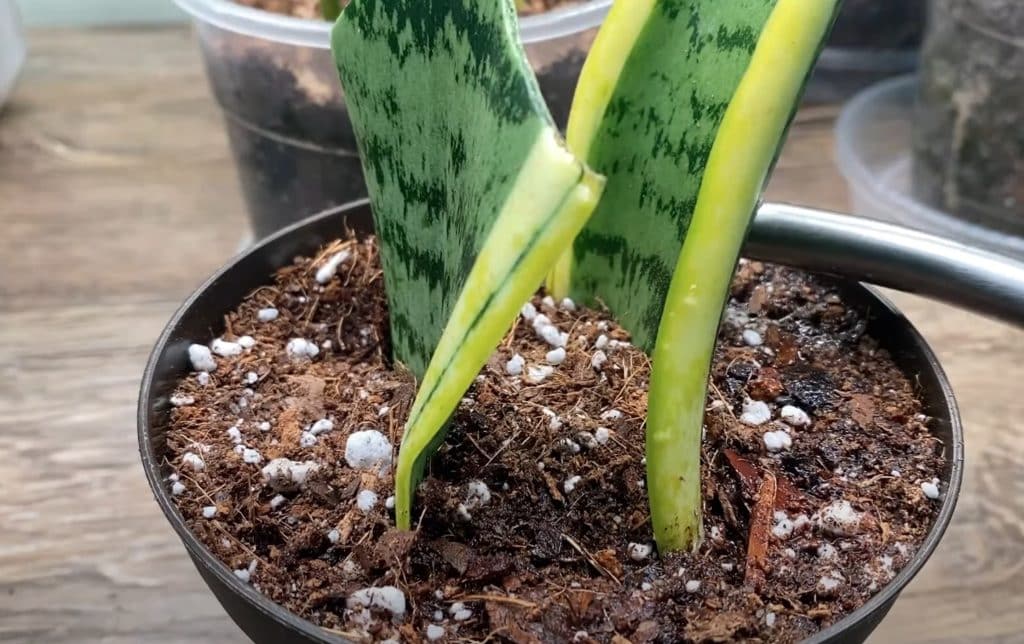
The Snake Plant is often called “Mother-in-Law’s Tongue” and is well-loved for its tall, architectural leaves that instantly add drama to any room. It tolerates low light and even helps purify the air by removing toxins.
This plant thrives in sandy, well-draining soil, so consider using a potting soil formulated for succulents or cacti. Bright, indirect light is preferred, but it does surprisingly well in shadier corners, too.
You’ll want to avoid overwatering because the roots can easily rot. When in doubt, let the soil become mostly dry before you water.
Watering any succulent needs careful attention, and for the Snake Plant, you should do it about once every 2-3 weeks. A quick tip from my own experience: if you notice the leaves wrinkling or bending, it’s time to water.
2. Pothos (Epipremnum aureum)
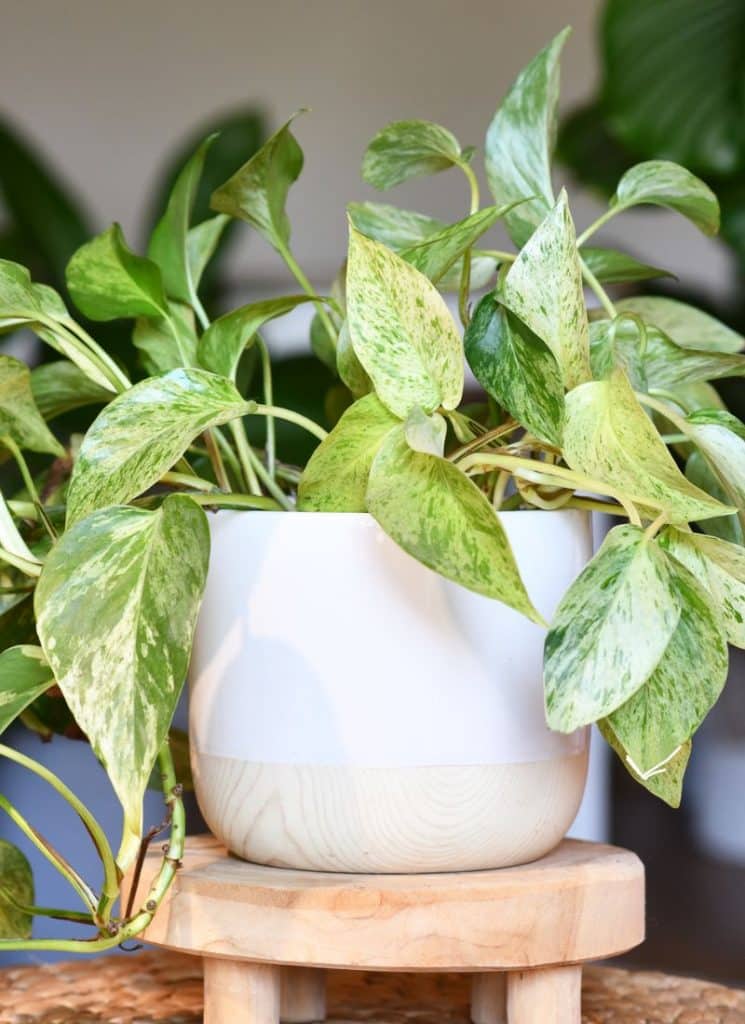
Pothos is one of the easiest and most rewarding houseplants around. Its trailing vines can be trained to climb a trellis or hang beautifully from a shelf, making it a versatile choice for any space.
Place your Pothos in bright, indirect sunlight, though it will do just fine in lower light conditions. Keep the leaves dust-free by gently wiping them with a soft, damp cloth.
To keep its stunning foliage vibrant, I like to feed mine with a plant food once a month.
Overwatering is one of the biggest mistakes with Pothos, so use a well-draining soil mix. Pothos likes the soil to be kept slightly damp but never soggy. Water once a week or when the top inch of soil feels dry. Give it a few days between waterings if you’re unsure—its leaves will droop slightly to let you know it’s thirsty.
3. Peace Lily (Spathiphyllum)
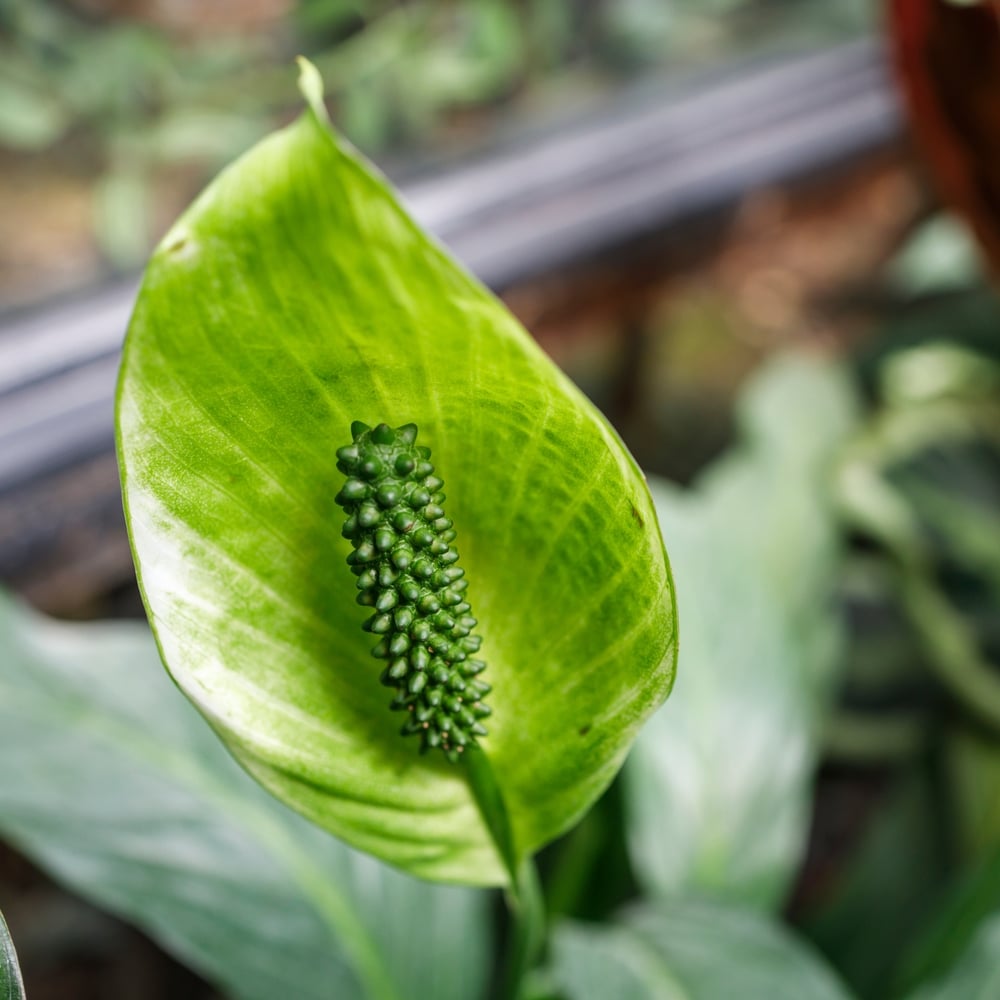
If you’re after a plant with lush foliage and elegant, white blossoms, the Peace Lily is a perfect pick. It’s also known for its air-purifying qualities, making it not just beautiful but beneficial for your indoor environment.
Peace Lilies appreciate medium to bright filtered light, though they can survive in lower light with fewer blooms. They also enjoy consistently moist soil, but be careful not to overwater.
I rely on a moisture meter to check the soil before watering to avoid the dreaded root rot.
A good indicator of dryness is when the leaves start to droop. You’ll want to water it about once a week. Every so often, gently mist the leaves for extra humidity—especially if you see brown tips.
4. Spider Plant (Chlorophytum comosum)
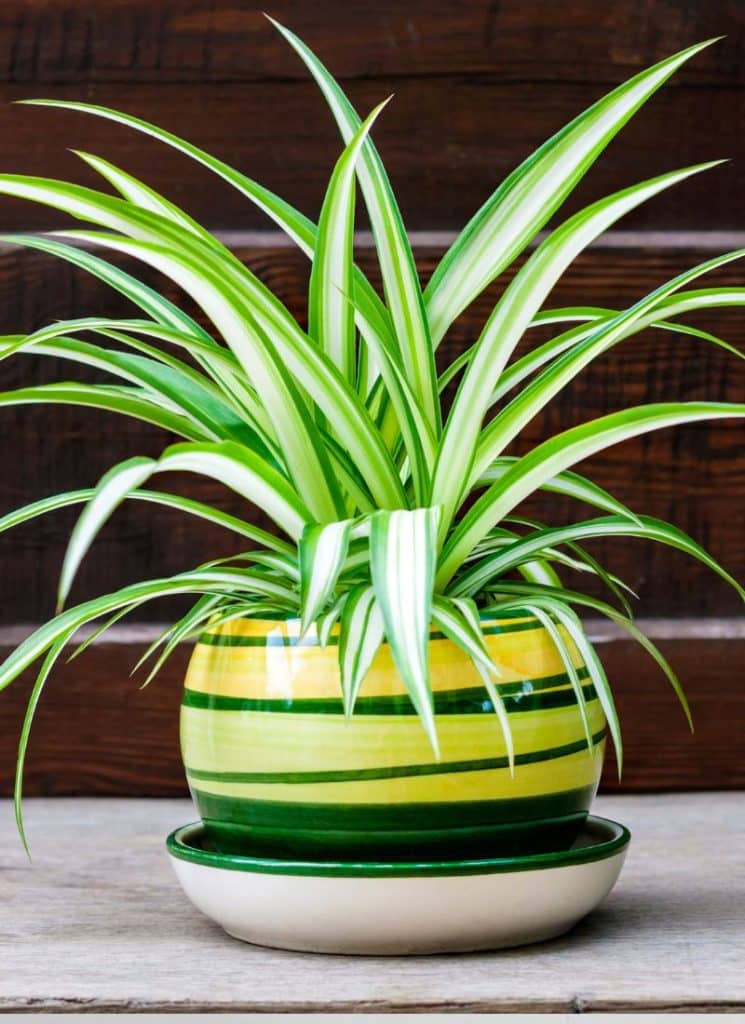
Spider Plants are adored for their arching leaves and the small “baby spiders” (or spiderettes) that dangle from the parent plant.
They are low-maintenance, air-purifying, and easy to propagate, making them a favorite among beginner gardeners.
These plants prefer bright to moderate, indirect sunlight. They can survive in low light, but their stripes may fade a bit. It’s best to use a watering can with a long spout to avoid splashing the leaves when watering.
Spider Plants prefer evenly moist soil, but not soggy. Let the top inch of soil dry slightly to avoid root rot and fluoride build-up (they dislike fluoride in tap water).
Water once every 5-7 days or when the topsoil is on the drier side.
5. Monstera Deliciosa (Swiss Cheese Plant)
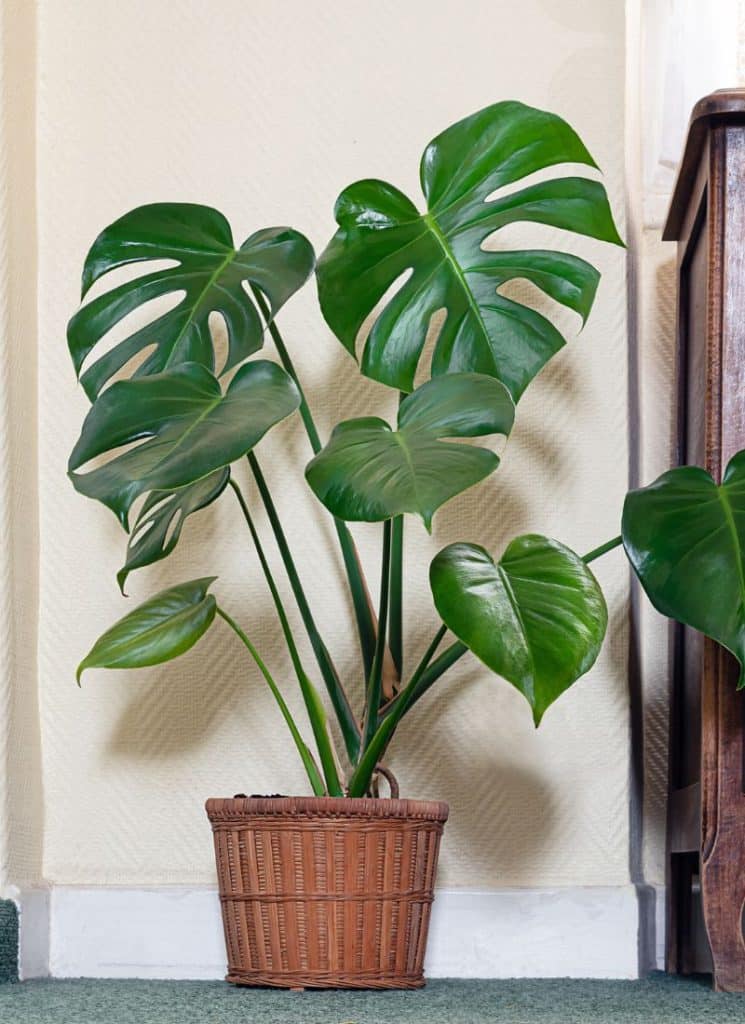
Monstera Deliciosa’s iconic split leaves make it a statement piece in any living space. With the right care, this plant can grow quite large, so be ready for it to be a focal point in your home.
Place your Monstera in a spot with bright, indirect light. Too much direct sun can scorch its leaves, while low light can stunt its growth.
Use a well-draining potting mix rich in organic matter, and if it gets too tall, you can trim it back with pruning shears.
Water once a week, ensuring the top inch of soil is dry before each watering. Over time, large aerial roots may form—feel free to tuck them into the soil or gently trim them if they get unruly.
6. Fiddle Leaf Fig (Ficus lyrata)
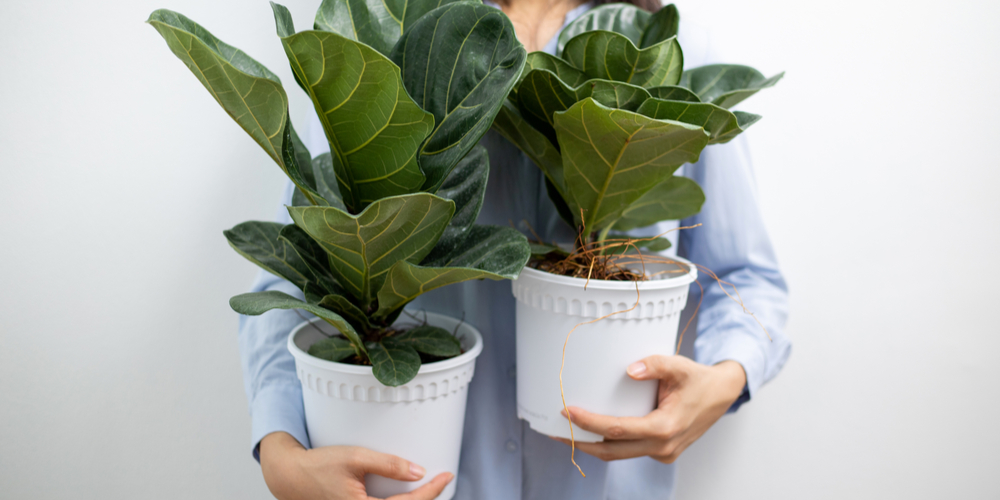
Fiddle Leaf Figs are known for their large, dramatic leaves that can transform any home into a stylish haven. They’re a bit finicky about their environment, but once they settle in, they reward you with stunning growth.
Place it where it can get bright, filtered light—ideally near a window with sheer curtains. A consistent watering routine is key.
Feed your Fiddle Leaf Fig with a indoor plant fertilizer once a month in spring and summer to encourage healthy leaf development.
Allow the top 1-2 inches of soil to dry out between waterings. Water once a week or so, adjusting based on your home’s humidity levels. Don’t let it sit in water, as this can lead to root rot.
7. ZZ Plant (Zamioculcas zamiifolia)
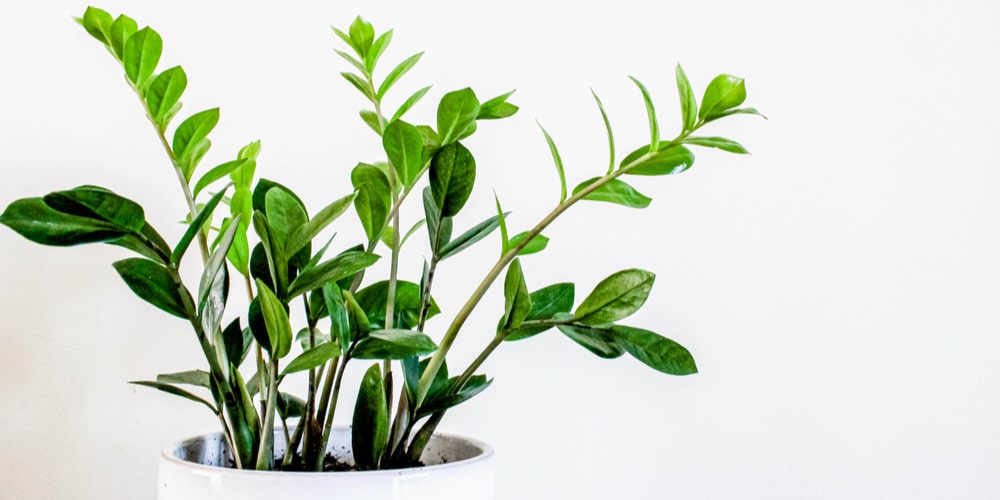
ZZ Plants are champs when it comes to low light and low maintenance. They have glossy, dark green leaves that give a beautiful modern look to any space.
ZZ Plants are drought-tolerant, making them perfect for busy plant parents. If your home lacks natural light, consider placing a grow light nearby to keep it happy.
They rarely fall victim to pests or diseases, so all you really need to watch is your watering schedule.
The thick rhizomes store water, so they’re prone to rot if overwatered. Water roughly every 2-3 weeks, letting the soil dry out completely in between. When new stems start shooting up, you can water a bit more frequently to support growth.
8. Aloe Vera
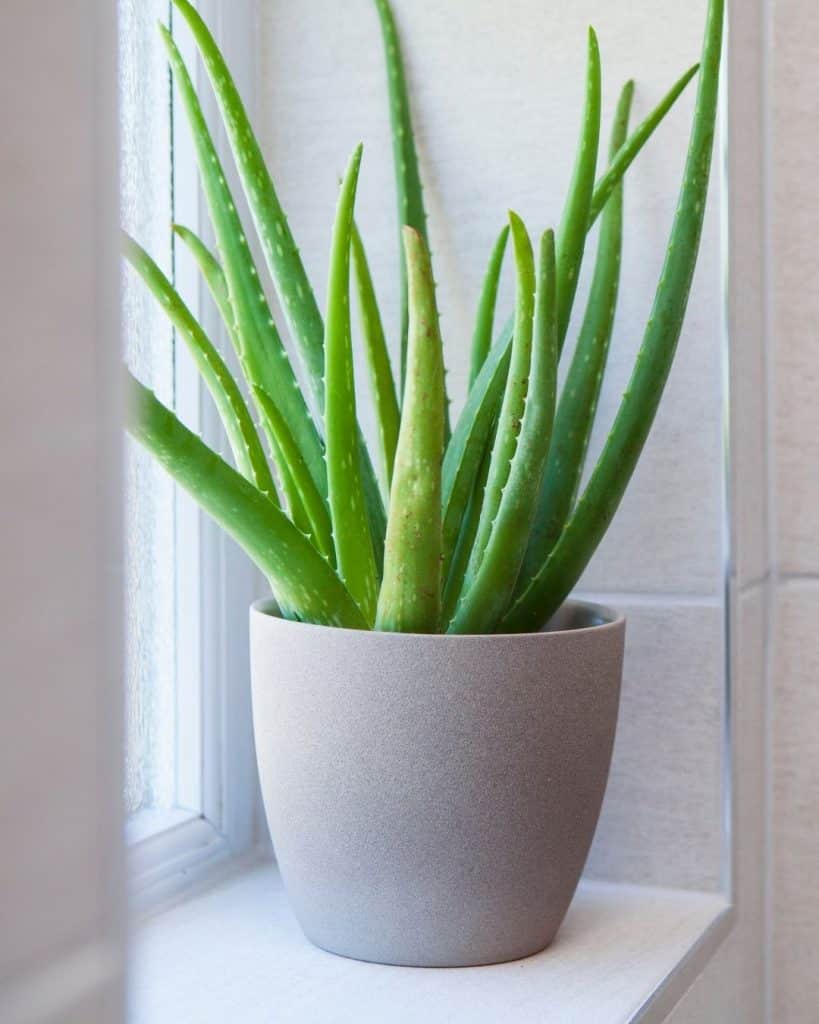
Aloe Vera isn’t just a decorative succulent—it’s also a medicinal wonder. The gel inside its leaves can be used to soothe burns and minor cuts.
Aloe loves bright, direct sunlight, so a sunny windowsill is perfect. Because it’s a succulent, it needs sandy, well-draining soil. I’ve found growing it in decorative plant pots with drainage holes really helps keep the roots healthy.
Water about every 2-3 weeks, or whenever the top couple of inches of soil are completely dry. Overwatering can cause the leaves to become mushy, so err on the side of underwatering with Aloe.
9. Boston Fern (Nephrolepis exaltata)
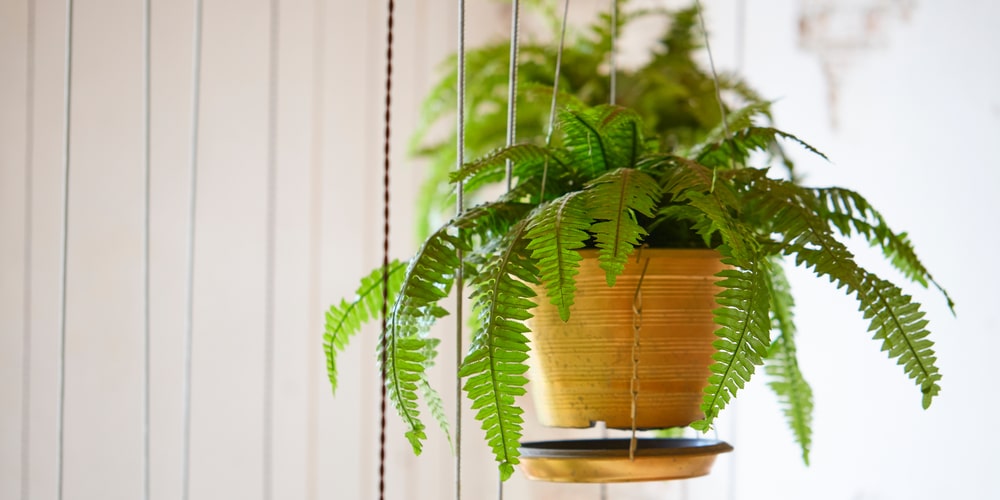
Boston Ferns are classic houseplants beloved for their feathery, bright-green fronds. They add a soft, elegant touch and look gorgeous hanging from baskets or perched on tall stands.
They thrive in bright, indirect sunlight and high humidity. Mist them regularly or place the pot on a tray of pebbles filled with water to boost humidity.
If pests ever rear their heads, consider using a houseplant insecticide formulated specifically for indoor ferns.
Keep the soil consistently moist but not waterlogged. Water about once or twice a week, or as soon as the surface feels slightly dry. Ferns can be sensitive to chlorine, so using filtered water can help keep the fronds lush and green.
10. Dracaena (Dracaena fragrans ‘Massangeana’ or “Corn Plant”)
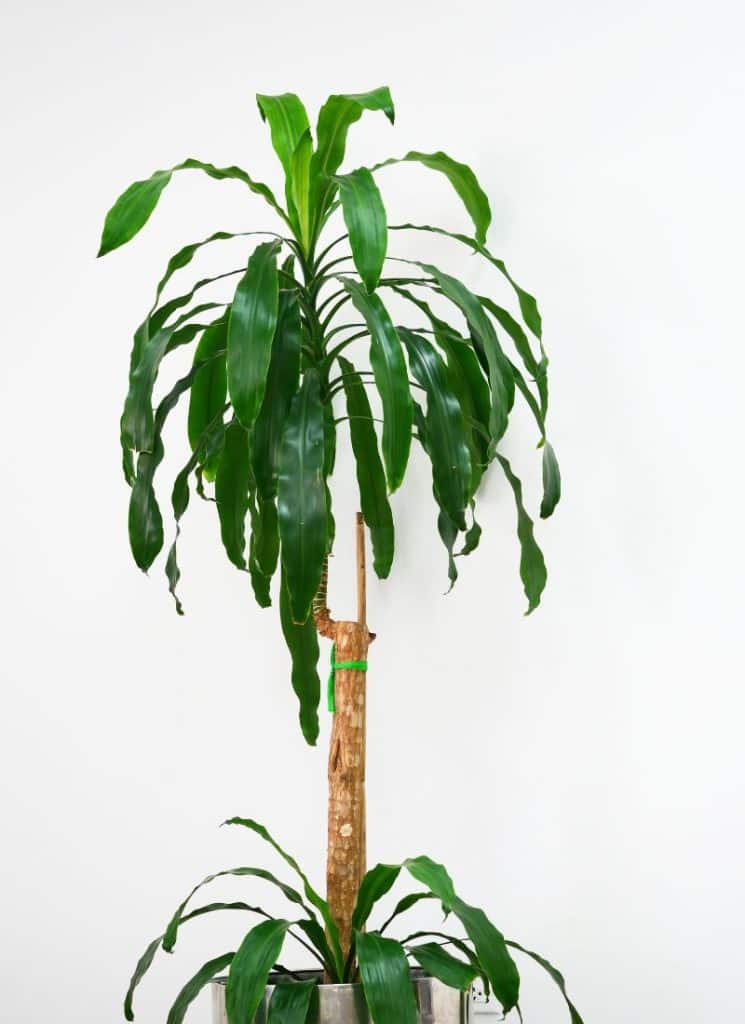
Dracaenas, particularly the “Corn Plant” variety, are known for their tall, cane-like trunk and broad leaves that resemble corn stalks.
They’re hardy, slow growers, and perfect for corners that need some greenery without direct sunlight.
Place them in moderate, indirect light, and they’ll do just fine. Too much direct sun can burn the foliage, while too little light will fade the leaf variegation.
Maintain medium moisture levels in the soil but ensure good drainage to avoid soggy roots.
Water once a week or when the top inch of soil feels dry. Dracaenas are prone to brown leaf tips if overwatered or exposed to fluoride in tap water, so consider watering with filtered or distilled water when possible.
11. Chinese Evergreen (Aglaonema)
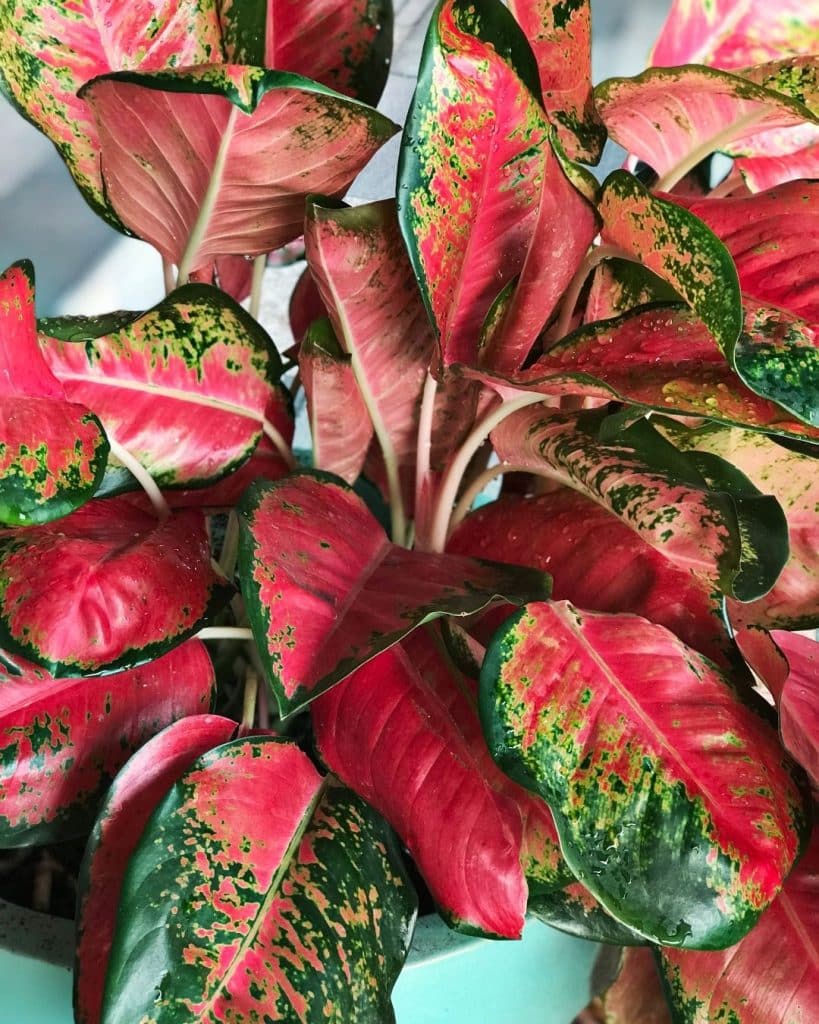
Chinese Evergreens are prized for their striking leaves, which can feature silver, pink, or red variegation. They’re extremely tolerant of low light, making them a top choice for offices or rooms with limited sunlight.
Keep them in a spot with moderate to low light, avoiding harsh direct sun. They thrive in slightly warm, humid conditions, so keep them away from cold drafts.
A balanced, water-soluble fertilizer once a month in spring and summer helps maintain vibrant foliage.
Allow the topsoil to dry out before watering, then water thoroughly. Water once every 1-2 weeks, but always adjust based on how quickly your soil dries. If the leaves curl or droop, it might be time to give them a drink.
12. Rubber Plant (Ficus elastica)
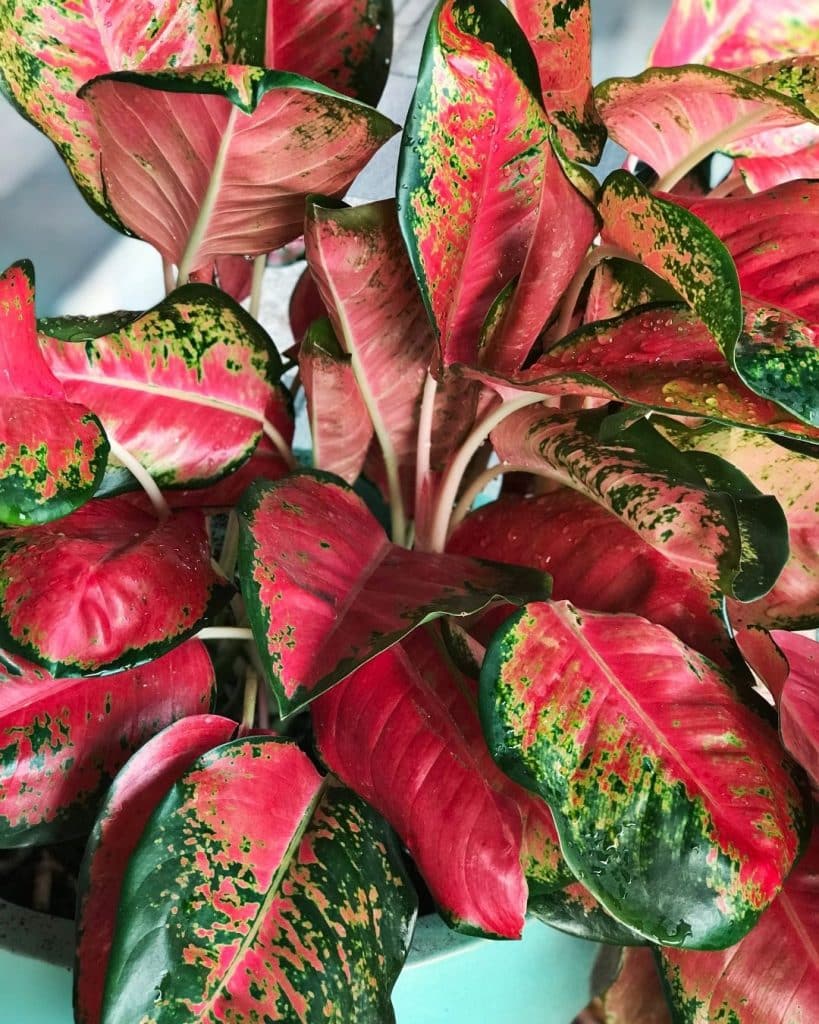
Rubber Plants have large, glossy leaves that make a bold statement. They’re fairly resilient but appreciate a stable environment without sudden temperature drops.
Set them in bright, filtered light for best growth—an east or west-facing window works well. Wipe the leaves regularly with a damp cloth to keep them shiny and dust-free.
They prefer slightly moist soil, so avoid letting them dry out completely for extended periods.
Water once a week, allowing the top inch of soil to dry first. Overwatering can cause leaf drop, so if you notice yellowing leaves, hold off on the watering until the soil is less damp.
13. Philodendron (Heartleaf or Philodendron Brasil)
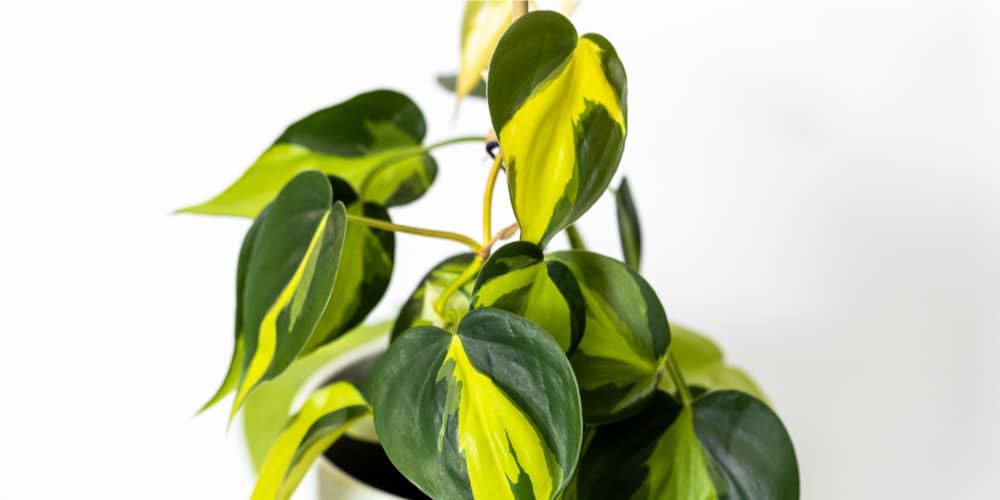
Philodendrons have been a houseplant staple for decades, thanks to their easygoing nature and lush, trailing vines. They come in various leaf shapes and sizes, so you’re bound to find one that suits your style.
They prefer medium to bright, indirect light but can handle low light. Rotate the pot every so often to encourage even growth. Philodendrons love well-draining, rich potting mix and do well with regular, gentle fertilization.
Water once a week or when the top inch of soil is dry. Drooping leaves can be a sign of both overwatering and underwatering, so check the soil before deciding which is the culprit.
14. African Violet (Saintpaulia ionantha)
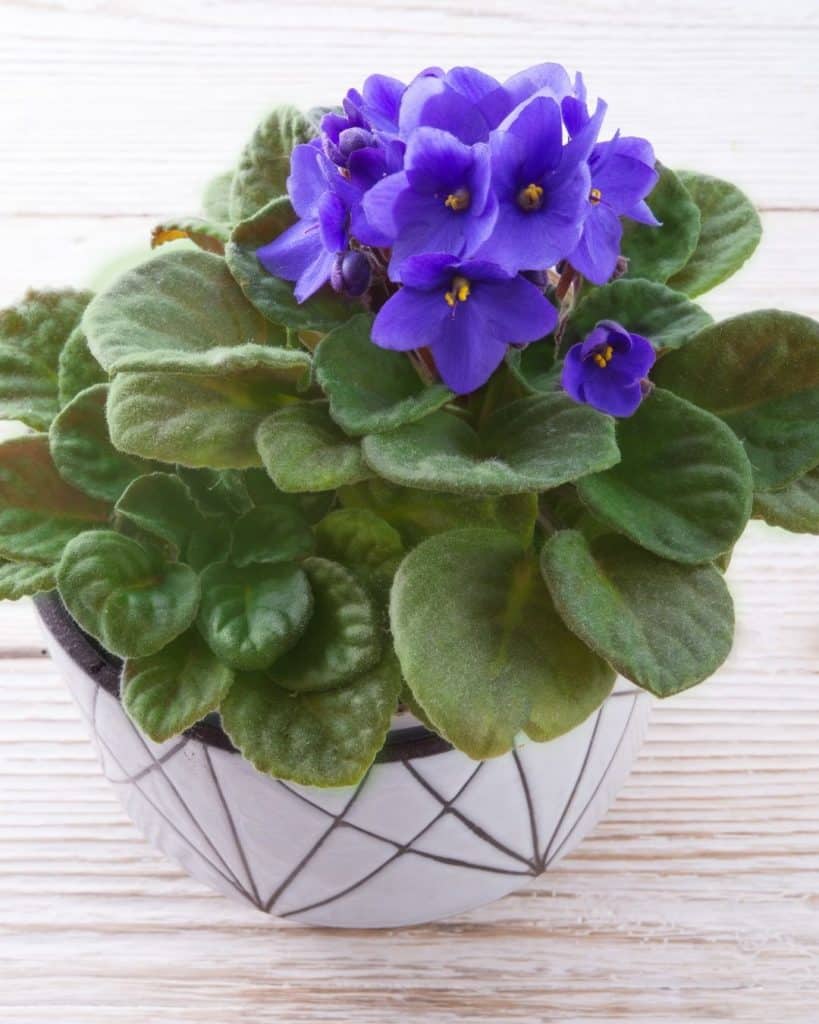
African Violets are admired for their vibrant blooms that come in purple, pink, and white. With their fuzzy leaves and compact shape, they’re often grown in small pots on windowsills.
They prefer bright, indirect light—direct sunlight can scorch their leaves. Keep the soil evenly moist and water from the bottom if possible to avoid getting water on the fuzzy leaves, which can lead to spotting or rot. They also appreciate slightly acidic soil.
Water about once a week, but never let them sit in water for too long. Fertilize with a violet-specific product every couple of weeks to keep those gorgeous blooms going strong.
15. Jade Plant (Crassula ovata)
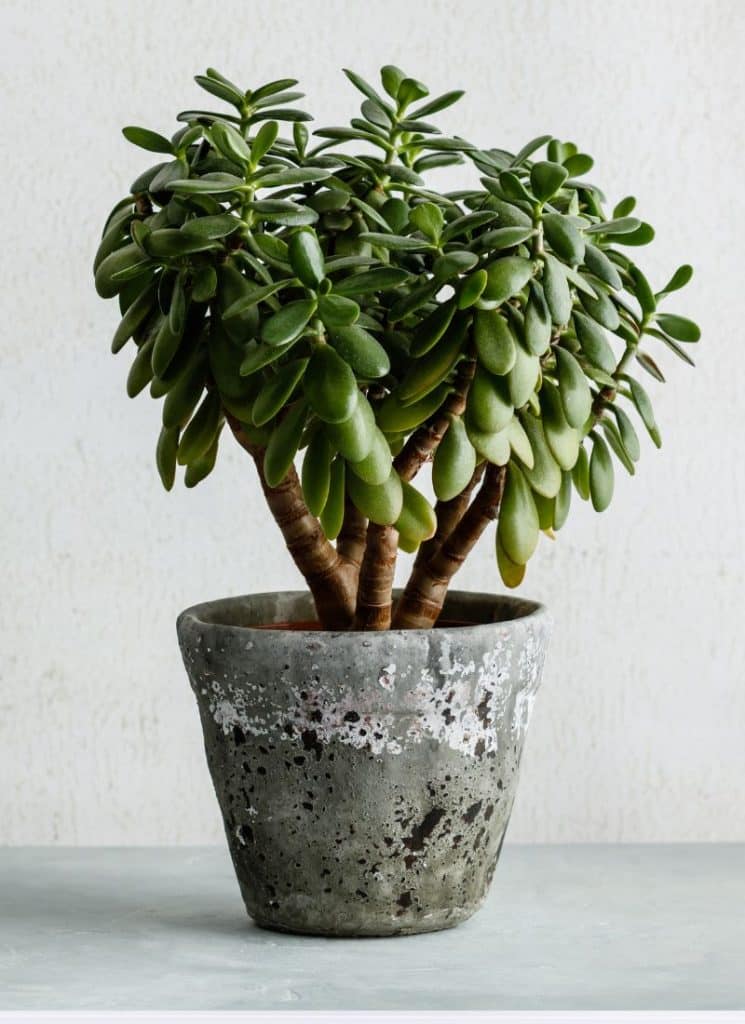
Jade Plants are succulents known for their thick, oval leaves and tree-like growth pattern. They can live for decades and are often passed down through generations as a symbol of good luck.
Place them in bright, direct sunlight—ideally a few hours of sun each day. They love rocky, well-draining potting mixes and don’t need frequent feeding.
If the plant gets top-heavy, consider staking it or pruning to maintain a balanced shape.
Water once every 2-3 weeks, letting the soil dry out completely in between. Overwatering is the most common cause of Jade Plant woes, so lean on the drier side to keep it happy.
16. Bromeliad (Various genera, e.g., Guzmania, Aechmea)
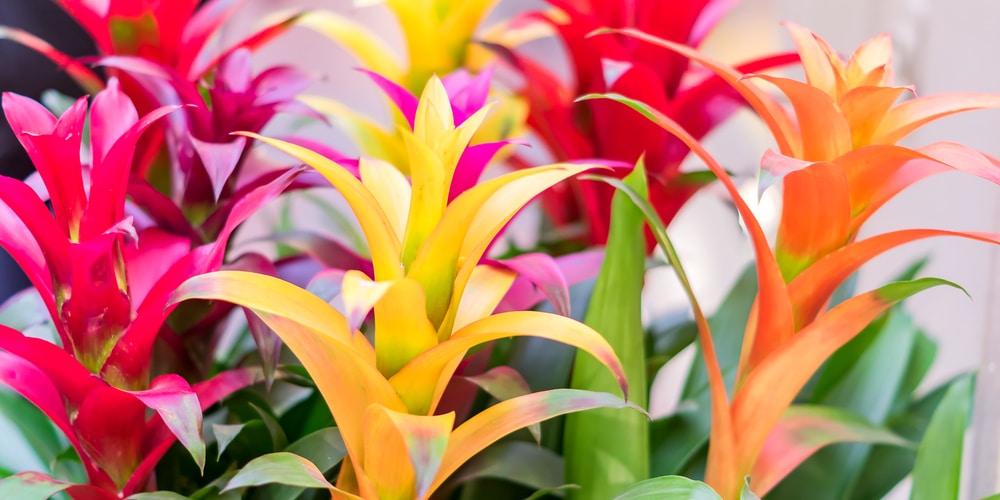
Bromeliads are tropical plants that boast vibrant, exotic-looking flowers. They make a striking centerpiece in any home, bringing a touch of the rainforest indoors.
Most Bromeliads can handle moderate to bright light, though direct sun can scorch the leaves. They have a central “cup” formed by their rosette of leaves, which should be kept filled with water. Refresh this water weekly to prevent bacteria buildup.
For the soil, water roughly once a week. Always let any excess water drain away. High humidity helps, so a bathroom or kitchen can be an ideal spot for them to flourish.
17. English Ivy (Hedera helix)
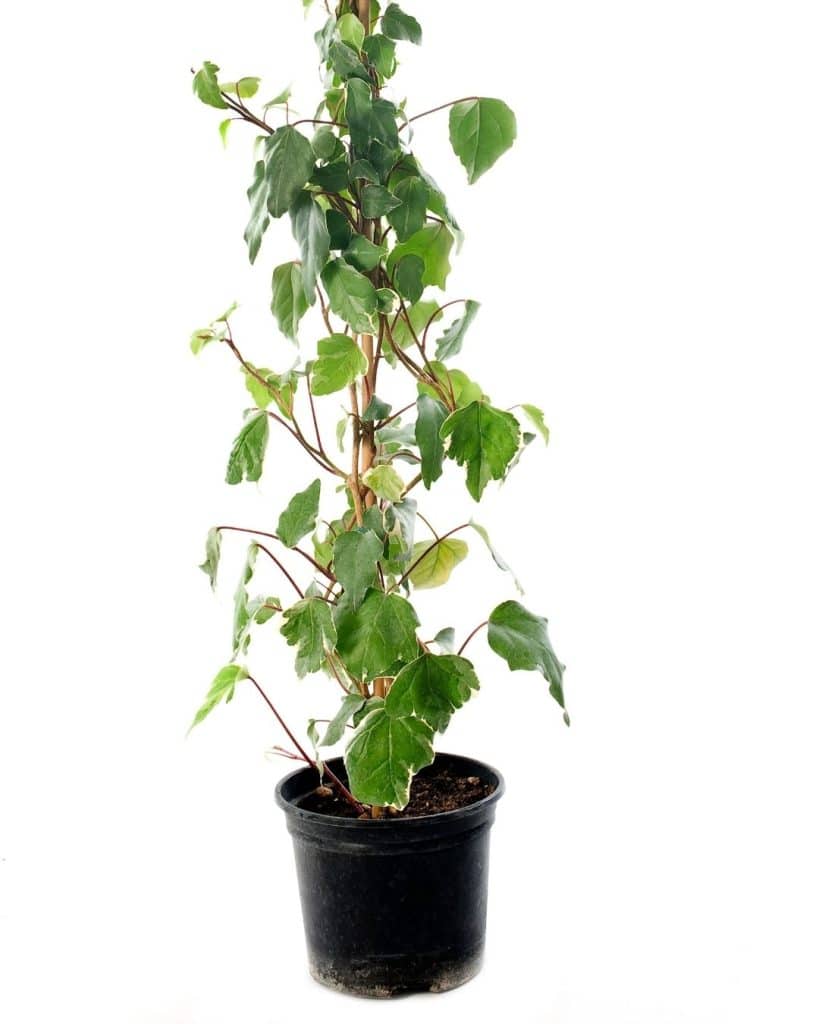
English Ivy is a fast-growing vine often used in hanging baskets or trained around topiaries indoors. Its classic leaves are a staple in English gardens, and it can bring a timeless charm to your home as well.
Ivy thrives in bright, indirect light but can adapt to lower light conditions. Trim back any leggy vines to promote a fuller appearance. Mist regularly to keep the leaves from drying out, especially if your home has low humidity.
Water about once a week or when the topsoil begins to feel dry. Avoid letting the soil stay soggy—root rot is a common issue if overwatered. Stay consistent, and you’ll have a cascading curtain of green in no time.
18. Calathea (Prayer Plant Family)
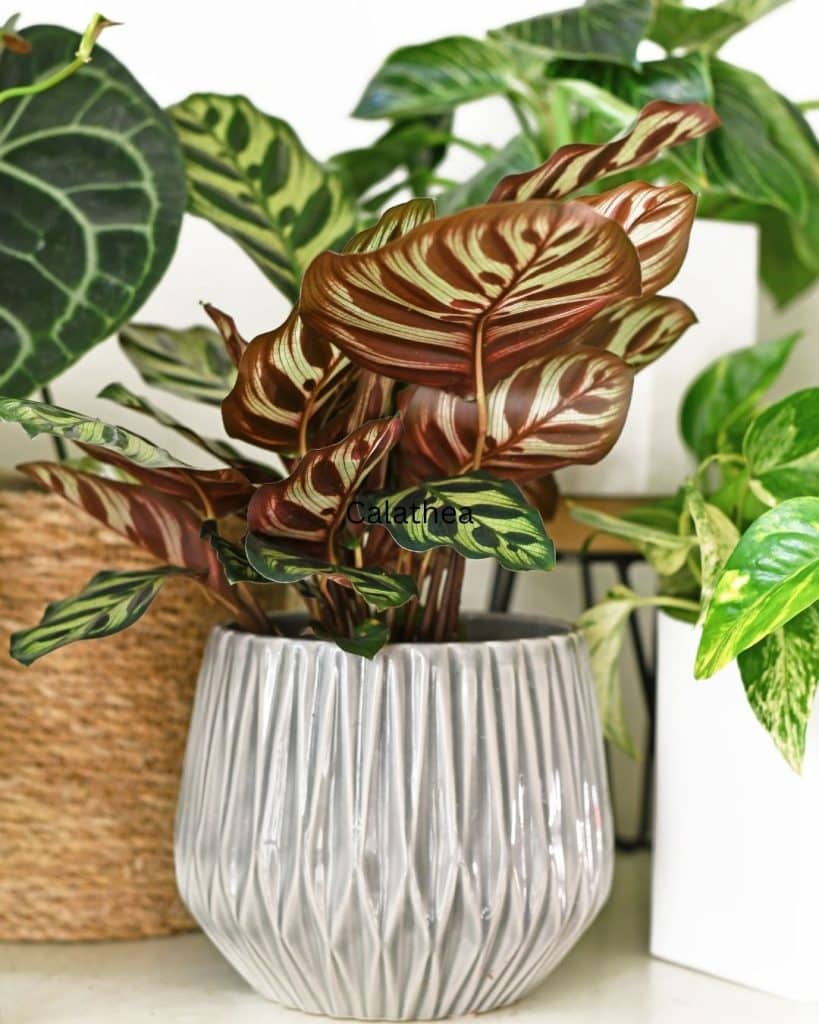
Calatheas are known for their beautifully patterned leaves, which often feature stripes or swirling designs. At night, their leaves fold upward—earning them the nickname “prayer plants.”
They prefer bright, indirect light and high humidity. If you live in a drier climate, try placing a humidifier for plants nearby to keep the air around them moist. They’re quite sensitive to chemicals in tap water, so using filtered or distilled water can reduce brown leaf edges.
Water about once a week, ensuring the top inch of soil stays consistently damp but not waterlogged. If your Calathea’s leaves are curling or developing crispy edges, it’s a sign it needs more moisture.
19. Bird’s Nest Fern (Asplenium nidus)
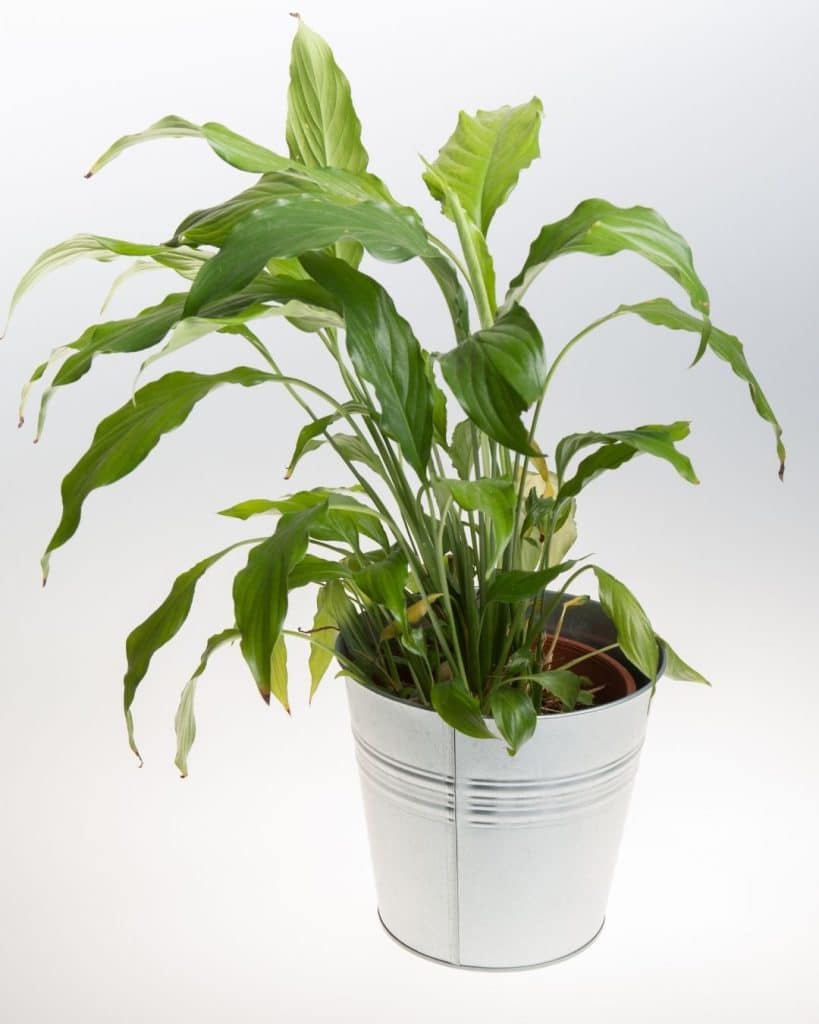
The Bird’s Nest Fern gets its name from the way its fronds radiate from a central rosette, resembling a bird’s nest. It’s a statement plant that does well in moderate, indirect light and a humid environment.
These ferns don’t like direct sun, which can scorch their delicate fronds. The key to success is maintaining consistently moist soil. Avoid watering directly into the center of the rosette to prevent rot.
Water once a week or when the top inch of soil dries. Regular misting is beneficial, but be gentle—over-misting can lead to fungal issues. Rotate the pot occasionally for even growth around the rosette.
20. Croton (Codiaeum variegatum)
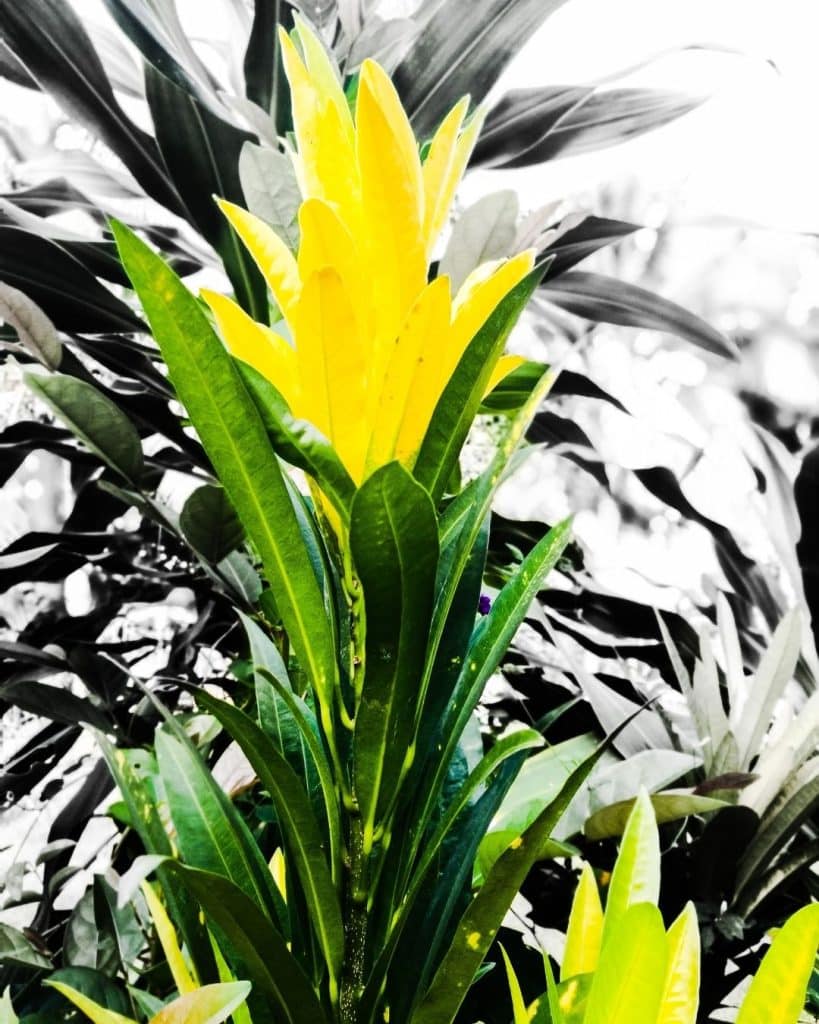
Crotons are all about bold color, with leaves splashed in red, orange, yellow, and green. They’re a bit temperamental about changes in light or humidity, but once settled, they’re stunning showpieces.
They love bright, direct light for at least a few hours a day to maintain their vibrant hues. Keep them warm and in moderately humid conditions; sudden drops in temperature can cause leaf drop. Wipe the leaves occasionally to keep them shiny and dust-free.
Water once a week, letting the top of the soil dry slightly in between. Crotons appreciate consistently moist soil but can’t handle being waterlogged. Watch for droopy leaves—they’re usually a cry for more water or higher humidity.
Bonus: Frequently Asked Questions
1. How do I know if I’m overwatering my houseplant?
Signs of overwatering include yellowing leaves, mushy or black roots, and persistent soil dampness. If your potting mix stays wet for days and the plant’s leaves are wilting or turning pale, it’s a strong indication to cut back on watering.
2. Should I mist my plants?
Misting can help raise humidity around plants that love moisture, like ferns and Calatheas. However, some plants (like African Violets) dislike water on their leaves. Always research your specific plant’s preferences before misting.
3. Is using tap water okay?
Tap water is generally fine for hardy plants like Snake Plants or Pothos. However, sensitive plants like Calatheas, Spider Plants, and Dracaenas can develop brown tips from fluoride or chlorine. If you notice this, consider using filtered or distilled water.
4. How often should I fertilize my houseplants?
Most houseplants do well with a balanced fertilizer once a month during the growing season (spring and summer). In fall and winter, growth slows, and many plants don’t need regular feeding. Always follow the directions on your fertilizer label.
5. How can I increase humidity for my plants?
Grouping plants together, misting the leaves, or placing them on a tray of pebbles with water can help create a more humid environment. Using a humidifier is the most effective method, especially for tropical houseplants that demand high moisture levels.